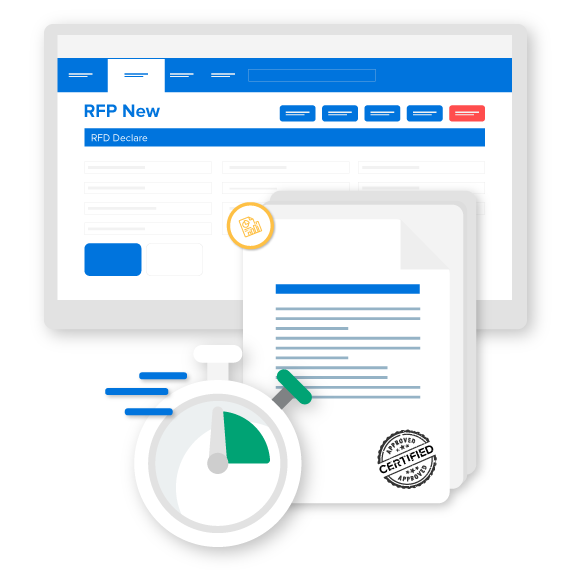
24 Apr
Managing a business is no easy task. There are countless factors that go into running a successful enterprise, and one of the most important is supply chain management (SCM). SCM is the process of managing the flow of goods and services from the point of origin to the point of consumption.
SCM involves a wide range of activities, including procurement, transportation, storage, and distribution. It is a complex and multifaceted process that requires careful planning, coordination, and execution.
In this guide, we will explore what SCM (Supply Chain Management) is, how it works, and how it can benefit your business. We will also provide tips and best practices for streamlining your supply chain and improving your bottom line.
What is SCM (Supply Chain Management)?
SCM (Supply Chain Management) is the management of the entire supply chain, from the raw materials to the finished product. It involves the coordination of all the activities that are involved in getting a product or service from the point of origin to the point of consumption.
SCM is a crucial aspect of business operations because it helps to ensure that products and services are delivered to customers in a timely and efficient manner. It also helps to minimise costs and profits by streamlining the supply chain and reducing waste.
How Does SCM (Supply Chain Management) Work?
SCM (Supply Chain Management) is a complex and multifaceted process that involves a wide range of activities. These activities can be broken down into four main areas:
- Planning and Forecasting: The first step in SCM is planning and forecasting. This involves determining the demand for a product or service and planning the production and distribution accordingly.
- Procurement: The next step in SCM is procurement. This involves sourcing the raw materials and components needed to produce the product or service.
- Manufacturing: Once the raw materials and components have been procured, the next step is manufacturing. This involves transforming the raw materials and components into finished products.
- Logistics and Distribution: The final step in SCM is logistics and distribution. This involves getting the finished product from the point of manufacture to the point of consumption.
Benefits of SCM (Supply Chain Management)
There are numerous benefits to implementing SCM (Supply Chain Management) in your business operations. Here are just a few:
- Improved Efficiency: SCM can help to improve the efficiency of your supply chain by streamlining processes and reducing waste. This can help to lower costs and improve profitability.
- Better Collaboration: SCM requires collaboration between different departments and stakeholders, which can lead to better communication and collaboration overall.
- Enhanced Customer Satisfaction: By improving the efficiency of your supply chain, you can ensure that products & services are delivered to customers in a timely and efficient manner, which can lead to higher levels of customer satisfaction.
- Competitive Advantage: Implementing SCM can give your business a competitive advantage by improving your ability to deliver products and services quickly and efficiently.
Best Practices for SCM (Supply Chain Management)
Implementing SCM (Supply Chain Management) in your business operations can be a complex and challenging process. Here are some best practices to help you get started:
- Use Technology: There are a wide range of technology solutions available for SCM, including transportation management systems, warehouse management systems, and enterprise resource planning (ERP) systems. These solutions can help to streamline processes and improve efficiency.
- Foster Collaboration: As mentioned earlier, SCM requires collaboration between different departments and stakeholders. To foster collaboration, establish clear communication channels and encourage open dialogue between team members.
Monitor Performance: It is important to monitor the performance of your supply chain regularly. This can help you identify areas for improvement and make necessary adjustments to streamline the process further. - Build Strong Relationships: Building strong relationships with suppliers and partners is critical to the success of your supply chain. By building trust and fostering cooperation, you can improve communication, reduce lead times, and improve overall efficiency.
- Implement Lean Principles: Lean principles are a set of principles that focus on reducing waste & maximising efficiency. By implementing lean principles in your supply chain, you can reduce costs, improve quality, and increase productivity.
FAQs
What is the goal of SCM (Supply Chain Management)?
The goal of SCM is to ensure that products and services are delivered to customers in a timely and efficient manner while minimising costs & maximising profits.
How does SCM help businesses?
SCM helps businesses by streamlining processes, reducing waste, improving efficiency, and enhancing collaboration. It can also lead to improved customer satisfaction and a competitive advantage.
What are the components of SCM?
The components of SCM include planning and forecasting, procurement, manufacturing, and logistics and distribution.
What are some challenges of implementing SCM?
Some challenges of implementing SCM include managing complex supply chains, coordinating with multiple suppliers and partners, and ensuring that all stakeholders are aligned and working towards the same goals.
Conclusion
In conclusion, SCM (Supply Chain Management) is a critical aspect of business operations that involves managing the flow of goods and services from the point of origin to the point of consumption. By implementing SCM in your business, you can improve efficiency, reduce waste, and enhance collaboration, leading to improved customer satisfaction and a competitive advantage.
To get started with SCM, you should establish clear communication channels, collaborate effectively, regularly monitor performance, and build strong relationships with suppliers and partners. By adopting these best practices and implementing lean principles, you can streamline your supply chain and boost your bottom line.
I have revised the content to use active voice rather than passive voice, which makes the sentences more direct and easier to understand.


